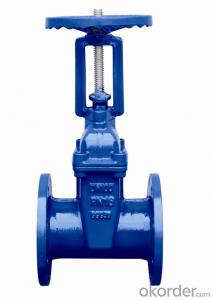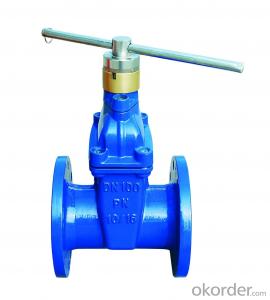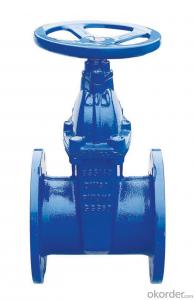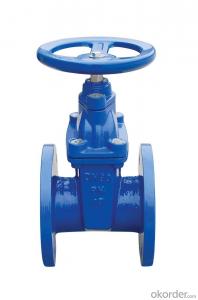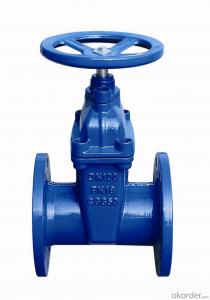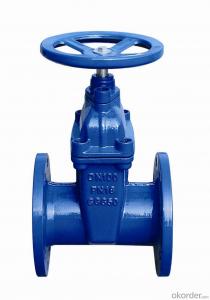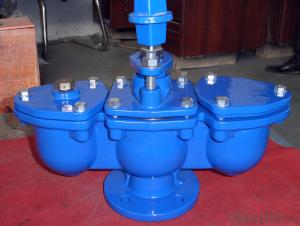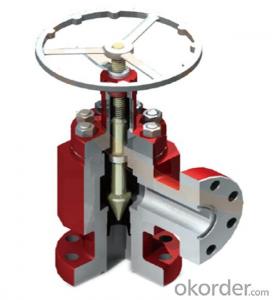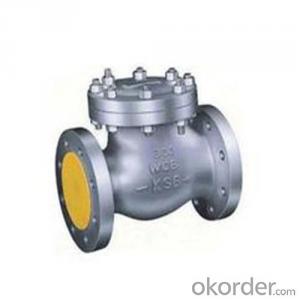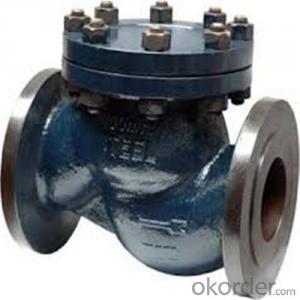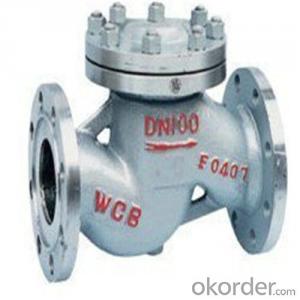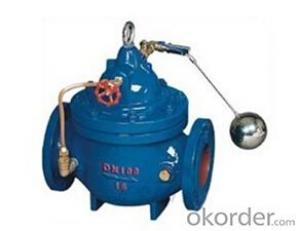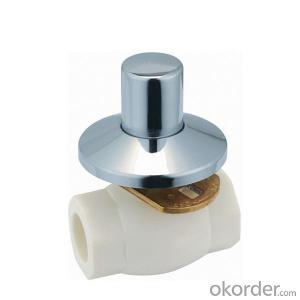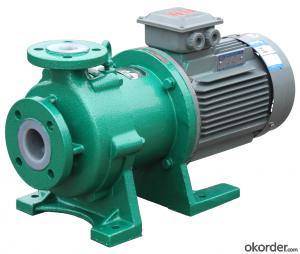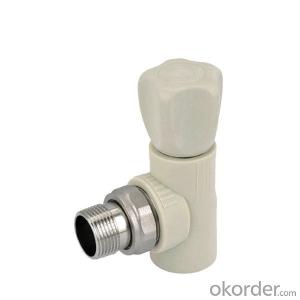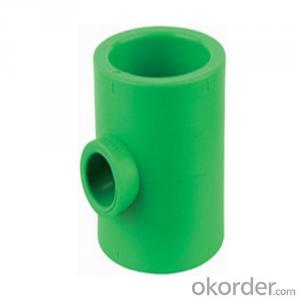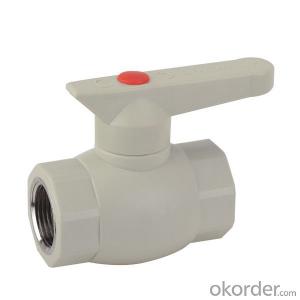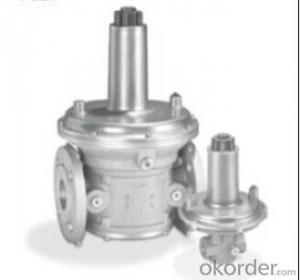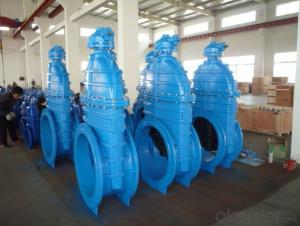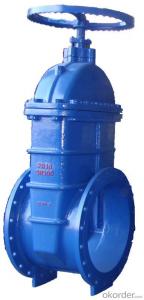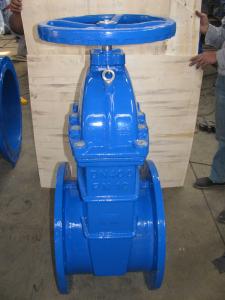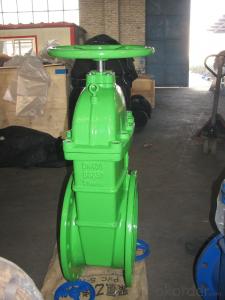Valve DN80 Non-rising Resilient Sluice BS5163
- Loading Port:
- Tianjin
- Payment Terms:
- TT OR LC
- Min Order Qty:
- 1 set
- Supply Capability:
- 1000 set/month
OKorder Service Pledge
OKorder Financial Service
You Might Also Like
1.Structure of Gate Valve Description:
A gate valve, also known as a sluice valve, is a valve that opens by lifting a round or rectangular gate/wedge out of the path of the fluid. The distinct feature of a gate valve is the sealing surfaces between the gate and seats are planar, so gate valves are often used when a straight-line flow of fluid and minimum restriction is desired. The gate faces can form a wedge shape or they can be parallel. Gate valves are primarily used to permit or prevent the flow of liquids, but typical gate valves shouldn't be used for regulating flow, unless they are specifically designed for that purpose. Because of their ability to cut through liquids, gate valves are often used in the petroleum industry. For extremely thick fluids, a specialty valve often known as a knife valve is used to cut through the liquid. On opening the gate valve, the flow path is enlarged in a highly nonlinear manner with respect to percent of opening. This means that flow rate does not change evenly with stem travel. Also, a partially open gate disk tends to vibrate from the fluid flow. Most of the flow change occurs near shutoff with a relatively high fluid velocity causing disk and seat wear and eventual leakage if used to regulate flow. Typical gate valves are designed to be fully opened or closed.When fully open, the typical gate valve has no obstruction in the flow path, resulting in very low friction loss.
2. Main Features of the Gate Valve:
• Valve body cavity using non-toxic epoxy resin,both inside and outside flashboard completely is coated with rubber
• Free of water pollution
• High manufacturing accuracy
• High strength
• Environmental protection and energy saving
• Good visual effect
3. Images
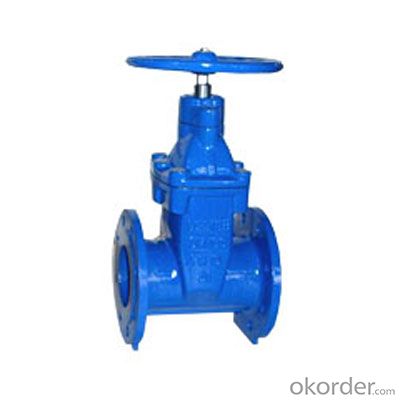
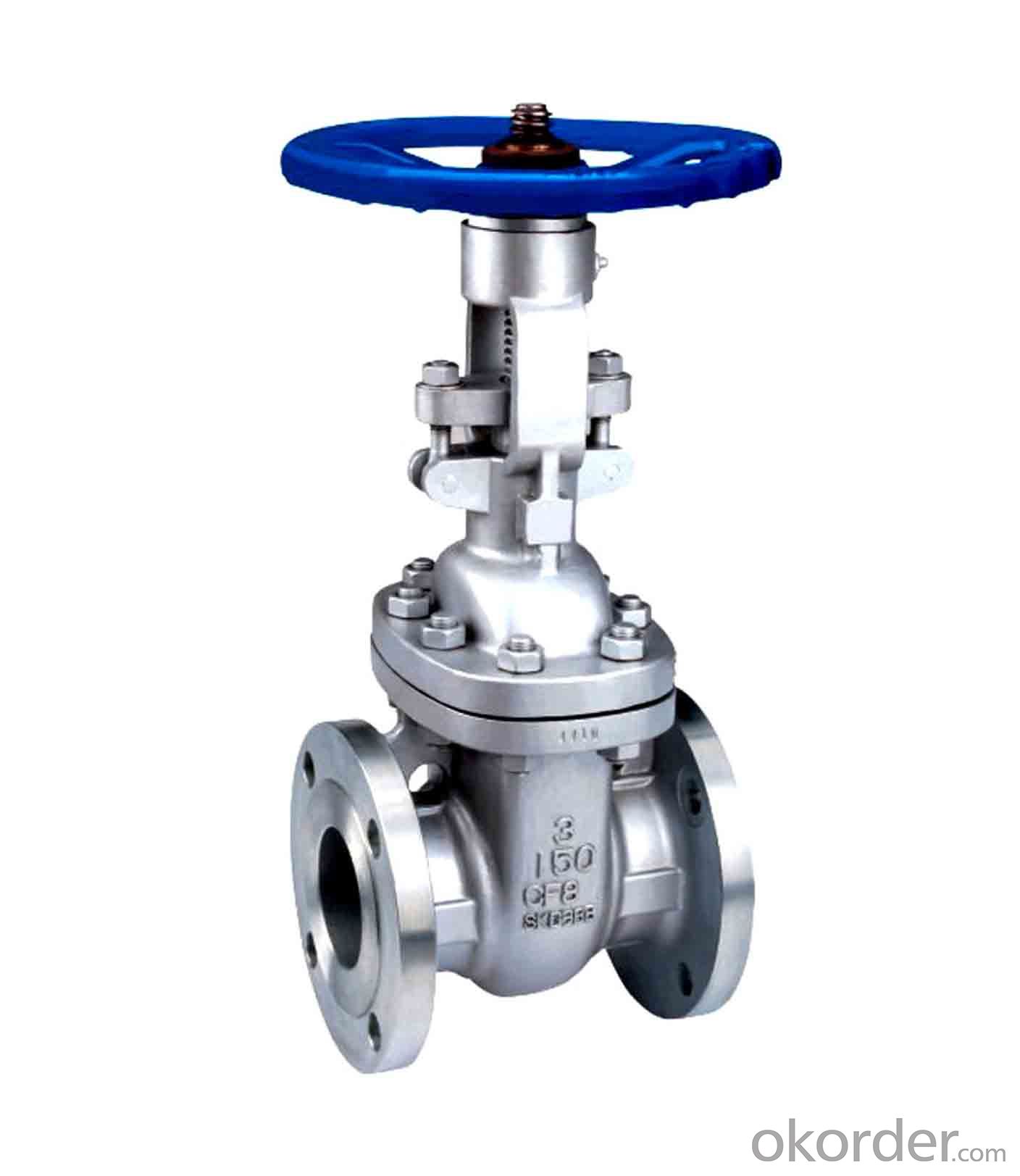
4.FAQ
1. What's are the characteristics of gate valve?
The distinct feature of a gate valve is the sealing surfaces between the gate and seats are planar, so gate valves are often used when a straight-line flow of fluid and minimum restriction is desired. The gate faces can form a wedge shape or they can be parallel.
2. What is the work principle of gate valve ?
The gate faces can form a wedge shape or they can be parallel. Gate valves are primarily used to permit or prevent the flow of liquids, but typical gate valves shouldn't be used for regulating flow, unless they are specifically designed for that purpose. Because of their ability to cut through liquids, gate valves are often used in the petroleum industry.
3. What is the structure?
Bonnets provide leakproof closure for the valve body. Gate valves may have a screw-in, union, or bolted bonnet. Screw-in bonnet is the simplest, offering a durable, pressure-tight seal. Union bonnet is suitable for applications requiring frequent inspection and cleaning. It also gives the body added strength. Bolted bonnet is used for larger valves and higher pressure applications.
- Q:so i'm replacing a one hole faucet, and i'm stuck at the very first step. the cold water valve turned off with no problems. i tried to turn on the cold water and none came out. unfortunately, the hot water valve just squeaks and goes around and around, never cutting off the water. when i turn it, it also leaks a minute amount of water, though regardless of which way i twist, it stops as soon as i do. i can't just unplug the hot water valve with it still running water, so does anyone have any ideas? how does one replace a valve like this to begin with? is it possible that there is a shut off valve for the house that i myself can access (without having to call someone to shut off my water)? in case you haven't noticed, i am a bit plumbing deficient, so if you could explain it without too much jargon, it would be much appreciated.
- There should be a main shutoff valve to cut the entire water supply to the house. If you have a basement the main valve would be where the water supply comes into the house. 99% of the time that is in the front of the house. If you live in a slab house then the main water shutoff is usually near the hot water tank in a pipe that typically comes out of the floor. If it is not there then it will be in the yard (usually the front yard) undeneath a metal cover. You can always turn a valve off and then check water by opening a faucet. Remember that you need to give it a couple minutes to see if it has shut off fully as water may drain out of house pipes. If you are just going to replace the hot water valve then you may have a shutoff for that above the hot water tank. Most lilkely the inlet side but could be the outlet side or even both. You can try those. Now you replace the valve once you are sure that water is shut off. You may not need to drain the hot water tank. Just turn it off and see if water continues to come out. Just turn a valve off and check to see if the water shuts off. Eventually you will find the right valve. Just remember it can take a while for water to drain out of the pipes. If you need help replacing the valve just add an additional comment and I will check back. Describe to me whether you have copper pipes or galvanized pipes and the type of shutoff that is there now.
- Q:what does mild sclerosis of aortic valve means? Why does it happens and what is its curethanks
- This is a routine, well established procedure. The incidence of major complications are less than 4%. There are two kinds of artificial Heart Valves. One is mechanical, and the other is tissue valve. The mechanical valve requires the person to be on life long anti-coagulation therapy. This also requires periodic check on the persons pro thrombin time. Based on this, the anti-coaglation dose will be adjusted. The problem with anti-coagulation is that it may lead to bleeding complications. The tissue valve is made from the tissues of a bovine or porcine heart. The tissue is denatured to ensure that the valve is not rejected as a foreign tissue. (This is not a problem with mechanical valves.) Being made of tissue, these valves do not allow clots to form, which means that anti-coagulation after a short initial period is not required. This is a major advantage, especially for women, who may have some earlier bleeding problems. Then why are mechanical valves used at all? Being made from non-living denatured tissue, tissue valves cannot repair themselves. They also tend to get calcified in younger people with more calcium activity. They also have a shorter life than mechanical valves. Surgeons tend to favour mechanical valves for younger people (whose life expectancy is higher), and the tissue valve for the older, as such people may already have some bleeding problems, the valve's durability is not critical and the patient has lower calcium activity. These are general considerations. Only a surgeon armed with the full test results, and a knowledge of the patient history, who can advise the patient on what is the best option in each case. To reiterate, AVR (Aortic Valve Replacement, not my initials) is a routine procedure and recovery tends to be uneventful. Wish you all the best, and as uneventful a recovery as possible.
- Q:I have a 99 Yamaha Warrior 350 and i am needing to take it and get the valves adjusted. I know prices will range from state to state but what would be the average price to take and get them adjusted?? Just the valves not including if they had to change the seals or anything.. Thanks(PS im a girl so put it in simple words!)
- The mechanics charge about $40. But, you can learn to do it yourself it is easy. Just loosen the outer nut. Turn the center one til it touches. Then back it off 1/8th of a turn. Then while holding the center one tighten the outer nut. Then your done with that valve, and repeat for however many valves you have.
- Q:Im replacing the valve stem seals and i dont know how to remove the springs and with the valve compressor wont fit in the engine
- Do NOT do what banit said, if you did his technique once you remove the keepers the valve would drop to the bottom of the cylinder and require a tear down. You must get the piston be at top dead center on the cylinder you intend on removing the valve springs from and you cannot do any other valves besides the ones on the cylinder you brought to top dead center. You can take the rocker arm off the top and take the push rod out then when at top dead center using a spring compressor you can take the keepers out, or if you do not have a spring compressor (proceed at your own risk) you can get an oversized socket and a dead blow hammer and place the socket over the top of the valve spring with the octagonal side towards the spring and give it a decent hit, but be aware the keepers will pop out and you may lose them if you are not careful.
- Q:what is meant by inherent characteristic for the steam control valve??
- There are different type of valves, (ball, gate, globe, needle, diaphram) each have their own characteristics in how they operate and the effect they have on flow. Inherent characteristic would be an effect that valve has on the fluid flowing through it.(steam can also be considered a fluid ) An example is a globe valve used to throttle a flow does so by adjusting the size of its opening. In essense its a variable orifice. Flow through an orifice results in a pressure drop across that orifice. So, an inherent characteristic of a globe valve is a pressure drop.
- Q:Leak in Heart Valve ?i was told by my doctor to to do a ultra sound on my heart a few weeks ago, wehn i finished the ultra sound the lady that did the scan asked if i had any type of heart disease in my family, and i responded that i dont, she said that i have a leak in my heart valve, but that was all, i dont have an appointment with my doctor til two weeks from now, i THINK i feel shortness of breath, but i feel like this may all be because im scared ...... main thing is has anyone had this or know anything about this is it dangerous, deadly ? should i be scared ?
- It depends on what valve is leaking, how much is leaking, and for how long has it been leaking. Wait for the physician to evaluate the echocardiogram. Technicians are often wrong or limited in their evaluation, as they are not trained in in-depth evaluation of echocardiographic studies like a cardiologist. Make an appointment with your doctor to discuss the results. You said you think you have shortness of breath, make sure you mention that when you make your appointment. Only your doctor will be able to determine if it is related to your heart, or due to anxiety, or from something else.
- Q:List all the brass instruments with valves? Thanks. I need it for the history exam -.-
- trumpet tuba baritone thats all i no:D
- Q:primary function of a valve position?
- I am within the equal concern as you are in proper now. What I do, is 1) get headphones and 2) shut your door (if viable). Additionally set the sport sound reduce so that you could hear when your mother or dad is coming. In case your mom would not mean you can play considering of violence like blood, there's a strategy to disable blood/gore create an autoexec.Cfg add violence_agibs zero violence_hgibs zero violence_hblood 0 violence_ablood 0 It sucks to have these kind of dad and mom If nothing else works, are trying different games reminiscent of diablo 2, or oblivion or anything. Just right luck!
- Q:Would a 96 saturn egr valve work on a 96 camaro
- Why would it. They are from different cars, with different engines.
- Q:the pressure relief valve on the top of the tank needs replaced
- Turn red dial to pilot.Shut the cold water feed off. There is a drain located at the very bottom of the tank youll need to hook a hose or hold a bucket and drain some water out of that. It doesnt need to be much a few buckets or a couple mins of hose will be fine. Then simply un-screw the old one. Put teflon tape and pipe dope if you have it around the new one and tighten in securely. open hot water at your sinks and turn cold water to tank back on slowly and let the sinks run until all air bleeds out and then shut them off. Re- light pilot. Done.
1. Manufacturer Overview |
|
|---|---|
| Location | |
| Year Established | |
| Annual Output Value | |
| Main Markets | |
| Company Certifications | |
2. Manufacturer Certificates |
|
|---|---|
| a) Certification Name | |
| Range | |
| Reference | |
| Validity Period | |
3. Manufacturer Capability |
|
|---|---|
| a)Trade Capacity | |
| Nearest Port | |
| Export Percentage | |
| No.of Employees in Trade Department | |
| Language Spoken: | |
| b)Factory Information | |
| Factory Size: | |
| No. of Production Lines | |
| Contract Manufacturing | |
| Product Price Range | |
Send your message to us
Valve DN80 Non-rising Resilient Sluice BS5163
- Loading Port:
- Tianjin
- Payment Terms:
- TT OR LC
- Min Order Qty:
- 1 set
- Supply Capability:
- 1000 set/month
OKorder Service Pledge
OKorder Financial Service
Similar products
New products
Hot products
Related keywords
